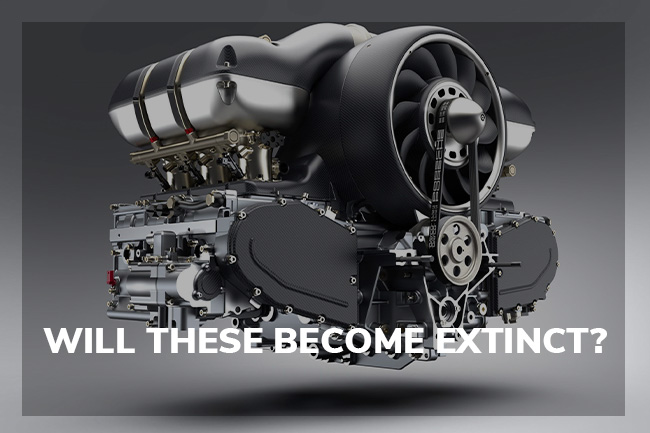According to the United States Environmental Protection Agency (EPA), transportation is one of the nation’s top sources of planet-warming greenhouse gas emissions.
The world is starting to understand the importance of transitioning from polluting energy sources. The California Air Resources Board recently announced a new requirement—all new cars sold in the state will need to be free of greenhouse gas emissions, like carbon dioxide, by 2035.
The Global Electric Vehicle Outlook found that the number of electric cars on the world’s roads by the end of 2021 was about 16.5 million, triple the amount in 2018.
Nearly everyone agrees on one thing: we need to make some serious changes to the transportation industry to reduce the amount of greenhouse gases entering the atmosphere.
Is it possible to do this with internal combustion engines in the picture? Let’s take a look at this type of engine and why some people believe “The Demise of the Internal Combustion Engine” is ahead:

The Significant Role of Internal Combustion Engines
Internal combustion engines have played a significant role in transportation for over a century. These reliable engines power cars, trucks, trains, ships, and planes.
Historically, internal combustion engines have been fueled by fossil fuels. When fossil fuels are burned, they release considerable amounts of carbon dioxide (a greenhouse gas) into the air.
That doesn’t seem to be slowing down the sale of cars powered by internal combustion engines. According to JATO, internal combustion engines accounted for over 90% of global car sales in the first half of 2019.
These engines power more than the transportation industry alone—internal combustion engines are widely used in generators to produce electricity.
Some believe that internal combustion engines need to disappear for the transportation industry to evolve.
Here’s the problem with internal combustion engines taking the backseat: it would be challenging to output the same amount of dependable power to the automotive industry and beyond.
Is there a way to utilize internal combustion engines without harming the environment?
Will Internal Combustion Engines Become Extinct?
It isn’t easy to imagine a world without internal combustion engines when they dominate the market today.
With MayMaan, the automotive industry can take a more sustainable approach while continuing to be powered by internal combustion engines. MayMaan has modified the internal combustion engine to run on 70% water and 30% renewable ethanol or methanol.
It’s unrealistic to assume that internal combustion engines are going anywhere. Instead, MayMaan has adapted the internal combustion engines to run cleanly. The emissions from the MayMaan engine have no NOx, SOx, soot, sulfur, mercury, or diesel particles. MayMaan internal combustion engines will run cleanly under all conditions.
The world can better address the climate crisis with innovators looking at as many solutions as possible. Internal combustion engines don’t need to end up like the dinosaurs. The answer is to use modified internal combustion engines that still power the planet — without harming it.

